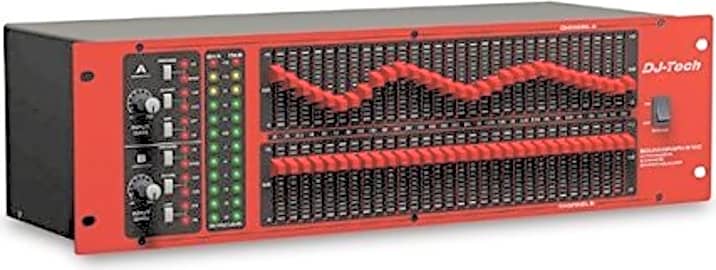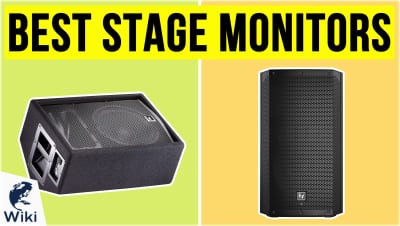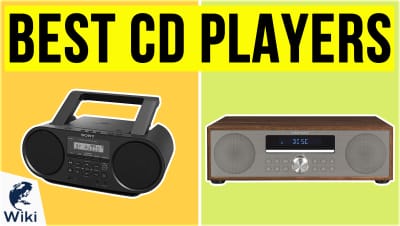The 10 Best Graphic Equalizers

This wiki has been updated 37 times since it was first published in January of 2017. If you really want to maximize the audio coming from any source, you'll need one of these graphic equalizers. They let you control several channels at the same time and fine tune the qualities of each one to various frequencies. We've included a selection of models suitable for a wide range of budgets and fit for home use, theatrical performances, and professional recording studios. When users buy our independently chosen editorial picks, we may earn commissions to help fund the Wiki.
Editor's Notes
July 19, 2020:
While the top performers in this category continue to be models aimed at use in recording studios or in live performance settings, there remain outstanding options that are equally suitable, if not even better, for use with home stereos and entertainment systems. The Art EQ355, for example, features RCA connectivity in addition to the more traditional XLR and 1/4-inch jacks, making it easy to hook up things like DVD players.
For pro audio use, the BSS Audio Opal FCS-966 is easily a top choice, not least of all for its contour shaping abilities. These can round out the curve around the 50Hz and 14KHz sliders, which are posts where there often need to be pretty hefty cuts to keep harsh high end or buzzy low end in check. The contour shaping makes those abrupt changes a little smoother.
We did get rid of the EMB EQB75 10-Band to make room for that BSS model, but also because it positioned itself as a home theater unit, but had slider leds that were so bright they could light up a space that, by design, should be as dark as possible. Without a closed theater cabinet, you're viewing experience would take a big hit.
July 09, 2019:
Compared to a previous version of our selection, we've eliminated a pair of EQ units that were decent performers, but whose interfaces couldn't really be considered graphic. I'm talking about the models by Planet Audio and Clarion, both of which are intended for use in cars and boast nice features like gold-plated terminals and easy installation, but that ultimately had to make way for a wider selection of EQ systems with truly graphic interfaces, all of which are intended for use in audio racks, either in recording studios, live performance venues, or home theaters. Many modern car stereos feature excellent built-in equalization capabilities, anyway, so this is not much of a loss for the list.
In place of those models, and in addition to those already featured, we've included some excellent offerings from the likes of Klark Teknik and Yamaha, the former of which features illuminated LED rings around its high-pass, low-pass, and swept notch filters, so you can see them more easily in a dark studio or performance space. Another illuminated model, the EMB 10-band, fell all the way to our ninth spot, as the brightness of its LED faders, while convenient in some settings, is consistently too bright for practical use in a home theater.
Talkin' Bout Good Vibrations
Molecules in liquid and gaseous states, on the other hand, provide a generally unadulterated medium, thanks to their fluid nature.
Sound relies on a number factors to make it from a speaker to the brain. Rather than a standalone phenomenon, such as a photon traveling through space, sound requires a medium through which it can travel. As the saying goes, in a vacuum, it simply doesn't exist — at least as far as people can hear .
So, if a tree falls in the next galaxy, can anyone hear it? Well, not in the absence of some type of atmosphere, because sound operates via conduction, which requires a physical medium — something not present in much of outer space. When an object causes a sudden vibration, the molecules around it determine the fate of the kinetic energy that emanates from it. The shockwave set off by the original source causes the various atomic particles to slam into each other and perpetuate the soundwave at a generally consistent frequency. If they're quite loosely connected, such as those of gases, they'll do a respectable job of transmitting the vibration. The closer they become, the more molecular collisions occur, and the more effective the transportation of the original sound. Water, for example, is a much more effective conductor of vibrations than air is. Solid objects are superior conductors of vibration to either air or water, however, solid material tends to distort sound by altering certain resonant frequencies. Molecules in liquid and gaseous states, on the other hand, provide a generally unadulterated medium, thanks to their fluid nature.
As complex as sound can be, it ultimately breaks down into two distinct measurements. Amplitude refers to a wave's intensity, and it's responsible for overall loudness. This function loses size over time as the molecules shed energy to external particles, which is what makes faraway noises quieter than close ones. Wavelength is the other principle quality of a soundwave, representing the distance from crest to crest, and it's referred to as the sound's frequency. Frequency is displayed as a figure in Hertz, or repetitions per second, and it directly translates to how high or low the sound is, known as the pitch.
While those are relatively simple building blocks, the real world is slightly more complex. When a singer sings just one note, a host of additional frequencies are picked up. These can come from the performer's own voice, the resonance of human bodies and sound equipment, and even the ever-present room tone. This is where intimate control over frequency output becomes incredibly important.
No Songs Are Created Equal(ized)
The term "high frequency" conjures images of an opera singer belting out a shrieking pinnacle performance that shatters any on-stage drinking glasses. Speaking more generally, every note on the scale is determined by where it stands in relation to the others. If a singer is slightly sharp to begin a solo performance, it's entirely likely that she'll stay slightly out-of-key, and that her act will sound basically the same. It's all relative. And different voices, whether of a person or a pipe organ, occupy different frequency ranges. So while the timbre of a voice is determined by the confluence of everything that affects the vibration, frequency isolation will always be an effective and reliable way to enhance certain parts of the audio spectrum, while masking others.
Speaking more generally, every note on the scale is determined by where it stands in relation to the others.
If someone's singing, or playing a horn, they're centering on one single pitch at a time, but it's a multitude of competing, extraneous, almost unhearable vibrations that make up the actual descriptive quality of the noise. Some of those sounds will be on the upper and lower fringes of the performer's intended note, and certain resonance frequencies will shine through brighter than others. If there's an entire band playing, it opens a whole new can of worms.
A good studio engineer can commit practically 110-percent focus to adjusting a singer's equalizer, but the process gains an entire level with five people jamming at once. A live setup starts with the technician curating each instrument and vocal channel as it enters the mixer. If you've ever heard, "Check, One, Two," prior to a concert, you've witnessed this configuration process. Larger events have a multitude of outputs, usually through multiple stage monitors as well as a single main that ultimately sends the music out into the crowd or onto a hard drive. But most budding audiophiles and smaller studios can get away with a decent rack setup that includes a relatively simple graphic equalizer. Luckily, there's a host of these tools available for purchase, with a range of different features and specifications.
Seeing The Sound
For the layperson, the world of professional audio can get very daunting, very quickly. In a way, sound engineering does relate to each one of us with a passion for music. On the other hand, it's often discouraging for the lifelong media consumer to try approaching audio the way professionals do. But if you have ears, you can take some beginner's audio engineering lessons simply by practicing using an equalizer. In fact, trial and error isn't a terrible way to start. A little bit of research can help pinpoint specific voices like a horn section or bass guitar, and specialized programs can familiarize the average fan with what are, honestly, somewhat esoteric mixing machines. With enough work, a dedicated neophyte can even begin to understand more complex parametric equalizers.
Furthermore, the latest models offer impressive advanced features that may well be worth the upgrade. As high-tech home theater installations gain traction, more and more homeowners are perfect their sound signal using these powerful machines. As such, many offer a variety of inputs and outputs that weren't found on older, studio-oriented devices. There are also features like limiters, compressors, and smart feedback detection systems, all of which can help a savvy enthusiast or practiced professional gain serious control of the aural situation. All in all, it's never been a better time to record, master, and publish the perfect track.















